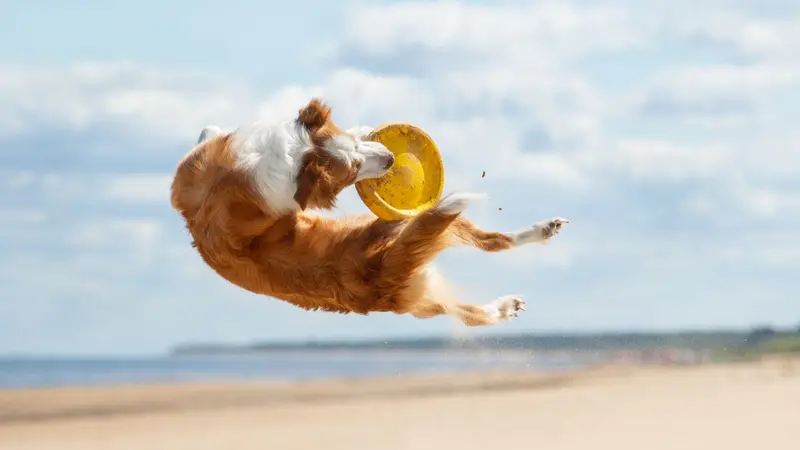
Natural Pets
Natural Pets
Leaps and Bounds: Keeping Canine Jumpers Injury-Free
Dogs are natural athletes that leap on and off things multiple times a day, usually without incident. That's why many people don't realize that, like humans, dogs can sustain injuries, including soft tissue trauma, such as cuts and bruises; back injuries or slipped vertebral discs; sprains; and broken legs.
Preventing Mishaps in a Jumper
Most active dogs that frolic outdoors will get the occasional scrape, cut or bruise. These common (usually minor) injuries can be prevented by ensuring that the areas they frequent are safe, contained and hazard-free. Broken legs, on the other hand, are more serious and typically do not result from normal, or even vigorous, high-intensity exercise. Bone fractures are generally caused by a sudden impact or great force to the body, such as being hit by a car or falling a long distance. They are most often seen in older pets and excitable risk-takers. The best way to prevent a dog from breaking a leg is to make sure it is under control at all times, especially outdoors.
Getting Dogs in Shape to Avoid Injuries
Back injuries, slipped discs and sprains, including canine cruciate ligament injuries, often occur in poorly conditioned dogs. For example, if a pup has been indoors most of the winter, her muscles have lost tone and atrophied. This also applies to “weekend warriors” that exercise and play at high intensity with their owners only on Saturdays and Sundays.
Studies show that well-conditioned muscles can begin to lose their tone and strength in a matter of days. This can set the stage for an injury if the activity level suddenly jumps significantly, so start by gradually improving a dog's fitness level. The minimum amount of exercise needed to maintain muscle tone is 20 minutes three times weekly, and as pets age, this amount increases. Aim for 40 minutes of rigorous walking or running every day. Consistency is essential for a dog’s muscles and ligaments to stay strong and resilient. This will keep the dog fit and better able to avoid strains, sprains and other injuries. Warming up before exercise is very important. Walk and encourage the dog to stretch its limbs before engaging in more intense exercise, especially with aging dogs.
Avoiding Cervical Disc and Neck Injuries
Cervical disc and neck injuries are often the result of collar strain. Dogs should be trained to walk beside their handler and heel on the leash. However, even the most well-trained dog will occasionally jump forward suddenly, causing the collar to pull tightly against their neck.
As dogs leap forward in excitement, they pull all the slack out of the leash and apply a great deal of pressure from the collar to their neck and cervical area, potentially resulting in an injury to the cervical disc or other neck problems. Symptoms can include a hesitance to move or lower the neck to eat or drink, and crying outbursts when the head or neck area are touched. Occasionally there can also be lameness in a front leg with this type of injury.
For dogs that habitually pull and whose leash behavior isn’t able to be improved, a harness, Gentle Leader-type head collar or other similar equipment can help distribute the dog’s body weight evenly across the restraint and alleviate the pressure on their neck.
Maintaining an Exercise Regimen
If a dog’s leg muscles aren't toned, tendons and ligaments aren't stretched and strong, and core muscles haven't been worked and can't do a good job holding the frame solidly in place, a sudden burst of activity even at home can lead to injuries. Canine companions need our help to maintain good skeletal health with daily, consistent, controlled aerobic exercise, including such activities as walking, hiking, jogging, swimming, fetching a ball or catching a Frisbee.
Depending on the geographical location, it is much easier to keep a dog fit during spring and summer months, but the goal should be to keep them exercised year-round. If harsh winters discourage outdoor activities, consider visiting an indoor dog park; exposing them to hydrotherapy or a warm-water dog pool; enrolling them in indoor agility, track training or nose work (a growing sport that encourages dogs to follow their natural hunting instincts); or taking them out on a cross-country skiing adventure.
Veterinarian Karen Shaw Becker has spent her career empowering animal guardians to make knowledgeable decisions to extend the life and well-being of their animals. To learn more, visit DrKarenBecker.com
Original article published at Natural Awakenings


 By
By







